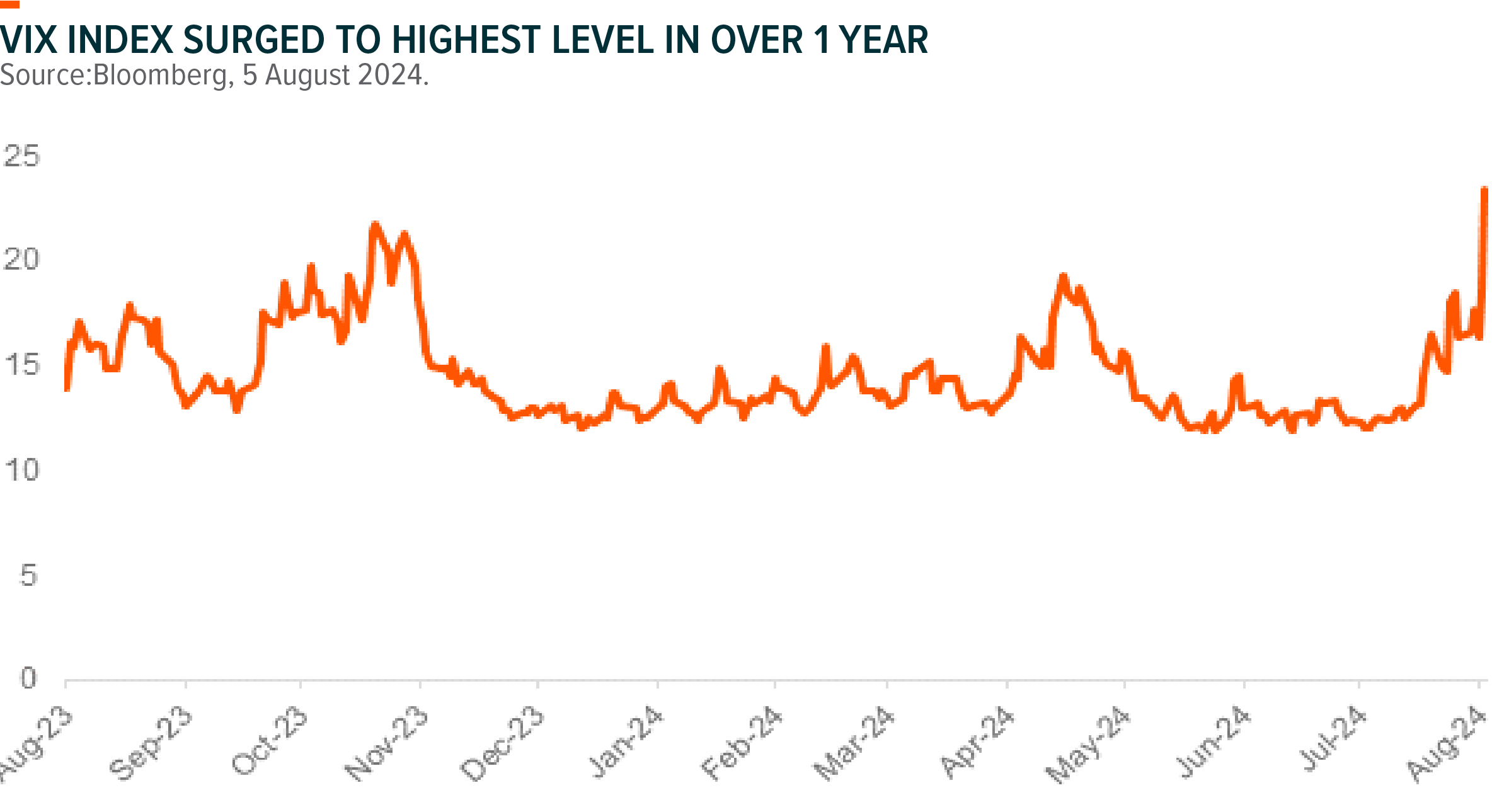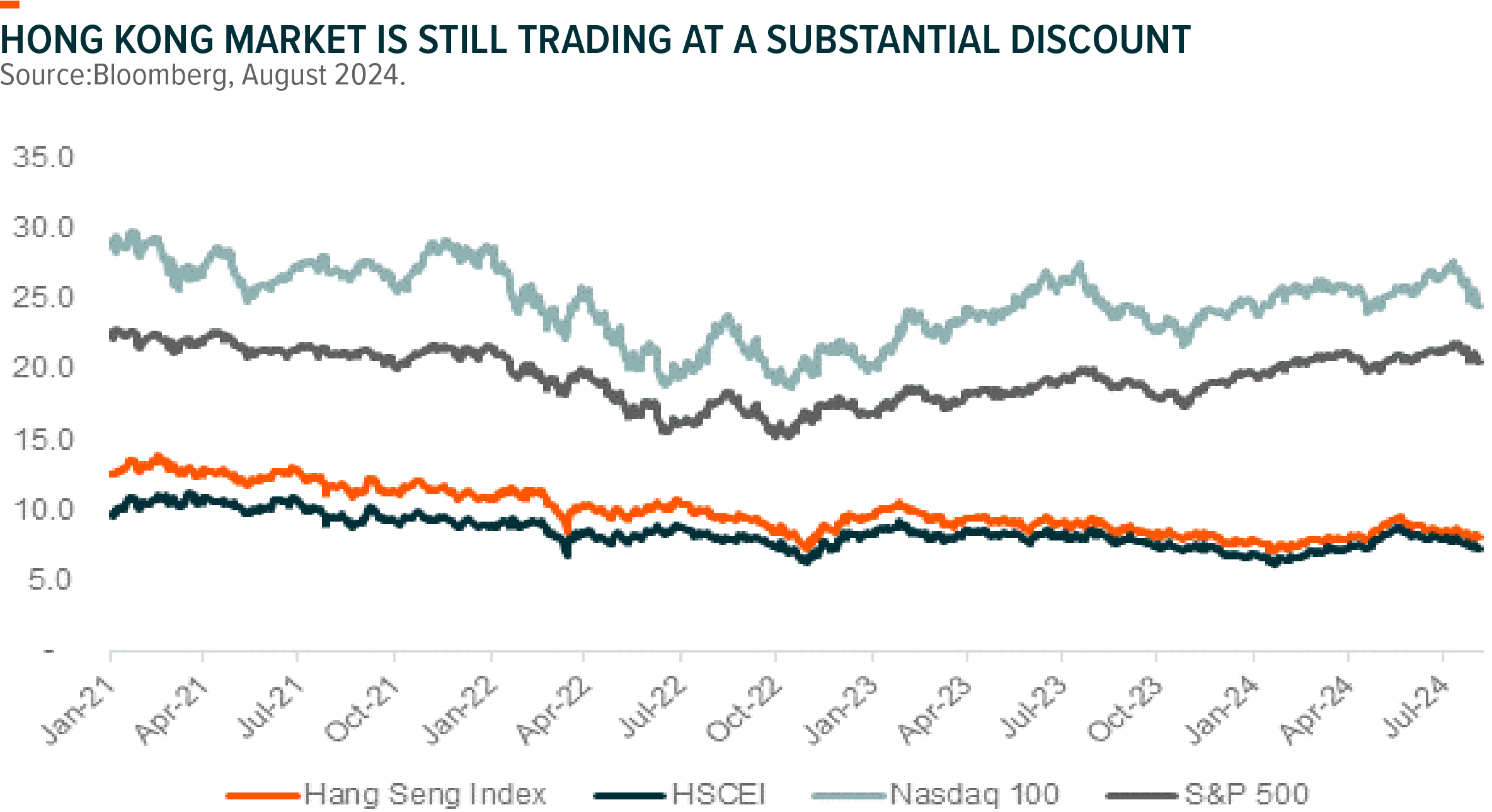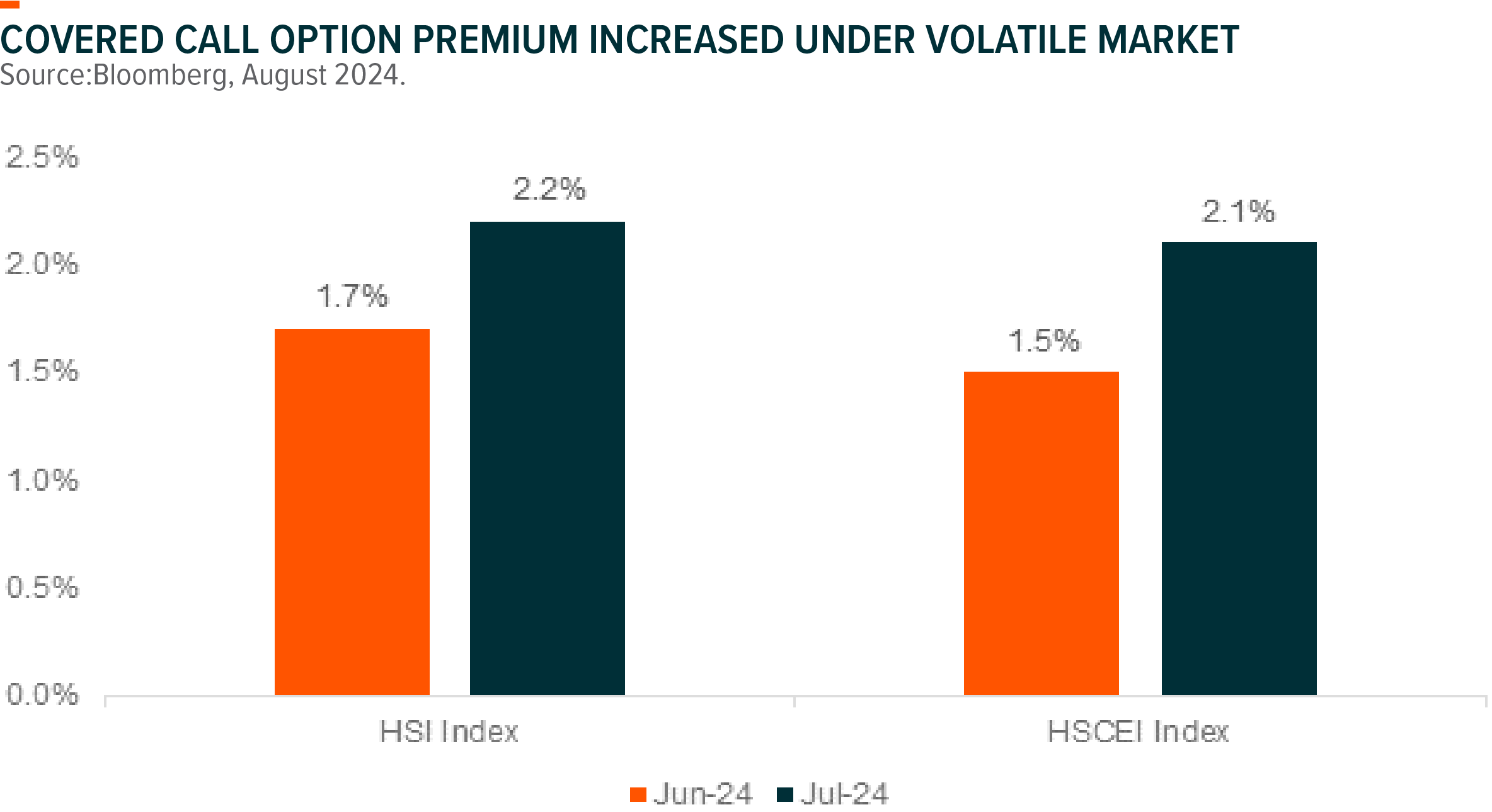Important Information
Investors should not base investment decisions on this content alone. Please refer to the Prospectus for details including product features and the risk factors. Investment involves risks. Past performance is not indicative of future performance. There is no guarantee of the repayment of the principal. Investors should note:
- The investment objective of Global X US Treasury 3-5 Year ETF (the “Fund”) is to provide investment results that, before deduction of fees and expenses, closely correspond to the performance of the Mirae Asset US Treasury 3-5 Year Index (the “Underlying Index”).
- The Fund is exposed to the Credit/Default risk of issuers of the debt securities that the Fund may invest in; the Credit Rating risk that the credit ratings assigned by rating agencies are subject to limitations and do not guarantee the creditworthiness of the security and/or issuer at all times; the Downgrading risk that the Manager may or may not be able to dispose of the debt securities that are being downgraded; the Interest rate risk that the prices of debt securities rise when interest rates fall, whilst their prices fall when interest rates rise; the Policy risk that the changes in macro-economic policies in the US may have an influence over the US’ capital markets and affect the pricing of the bonds in the Fund’s portfolio, which may in turn adversely affect the return of the Fund; the Sovereign debt risk that the Fund’s investment in US Treasury securities may be exposed to political, social and economic risks that the Fund may suffer significant losses when there is a default of the US Treasury; the valuation risk that the valuation of the Fund’s instruments may involve uncertainties and judgmental determinations. If such valuation turns out to be incorrect, this may affect the Net Asset Value calculation of the Fund.
- The Underlying Index is a new index. The Underlying Index has minimal operating history by which investors can evaluate its previous performance. There can be no assurance as to the performance of the Underlying Index. The Fund may be riskier than other exchange traded funds tracking more established indices with longer operating history.
- The Underlying Index is subject to concentration risk as a result of tracking the performance of a single geographical region, namely the US, and is concentrated in debt securities of a single issuer, namely the US Treasury. The Fund’s value may be more volatile than that of a fund having a more diverse portfolio and may be more susceptible to adverse economic, political, policy, foreign exchange, liquidity, tax, legal or regulatory event affecting the US market.
- The base currency of the Fund is USD but the trading currency of the Fund is in HKD. The Net Asset Value of the Fund and its performance may be affected unfavourably by fluctuations in the exchange rates between these currencies and the base currency and by changes in exchange rate controls.
- The borrower may fail to return the securities lent out in a timely manner or at all. The Fund may as a result suffer from a loss or delay when recovering the securities lent out. This may restrict the Fund’s ability in meeting delivery or payment obligations from realisation requests. As part of the securities lending transactions, there is a risk of shortfall of collateral value due to inaccurate pricing of the collateral, adverse market movements in the collateral value or change of value of securities lent. This may cause significant losses to the Fund.
- The trading price of the Units on the SEHK is driven by market factors such as the demand and supply of the Units. Therefore, the Units may trade at a substantial premium or discount to the Fund’s Net Asset Value.
- Payments of distributions out of capital and/or effectively out of capital amounts to a return or withdrawal of part of an investor’s original investment or from any capital gains attributable to that original investment. Any such distributions involving payment of distributions out of capital or effectively out of capital of the Fund may result in an immediate reduction in the Net Asset Value per Unit of the Fund and will reduce the capital available for future investment.
- Global X USD Money Market ETF’s (the “Fund’s”) objective is to invest in short term deposits and high quality money market investments. The Fund seeks to achieve a return in USD in line with prevailing money market rate.
- The purchase of a Unit in the Fund is not the same as placing funds on deposit with a bank or deposit-taking company. The Fund does not guarantee principal and the Manager has no obligation to realise the Units at the offer value. The Fund does not have a constant NAV. The Fund is not subject to the supervision of the Hong Kong Monetary Authority.
- The Fund employs an actively managed investment strategy. It may fail to meet its objective as a result of the Manager’s selection of investments, and/or the implementation of processes which may cause the Fund to underperform as compared to prevailing money market rates or other money market funds with a similar objective.
- The Fund seeks to achieve a return in USD in line with prevailing money market rates. The factors influencing interest rates, and in turn the performance of money market instruments include, amongst other things, monetary policy, fiscal policy and inflation. If the prevailing money market rates become negative, the Fund will suffer a loss. Moreover, if prevailing interest rate is at a low level, the Fund may also produce a negative return over a given period of time, as ongoing charges of the Fund may be higher than the interests received by the Fund.
- Risks associated with short-term debt securities / money market instruments include Short-term debt instruments risk, Credit / Counterparty risk, Interest rate risk, Sovereign debt risk, Credit rating risk, Credit rating agency risk, Downgrading risk and Valuation risk.
- The Fund will invest primarily in USD-denominated and settled short-term deposits, high quality money market instruments (including debt securities). The Fund is therefore likely to be more volatile than a broad-based fund that adopts a more diversified strategy. The value of the Fund may be more susceptible to adverse economic, political, policy, foreign exchange, liquidity, tax, legal or regulatory event affecting the USD market.
- Investors of Listed and Unlisted Classes of Units are subject to different pricing, trading hours in the secondary market, dealing deadlines and dealing arrangements. In a stressed market scenario, investors of the Unlisted Classes of Units could realise their Units at NAV while investors of the Listed Class of Units in the secondary market could only realise at the prevailing market price (which may diverge from the corresponding NAV) and may have to exit the Sub-Fund at a significant discount.
- For Listed Class of Units, the transaction fee and the duties and charges in respect of creation and realisation applications are paid by the participating dealer applying for or realising such units and/or the Manager. Investors of Listed Class of Units in the secondary market may bear other fees, such as SEHK trading fees. On the other hand, investors of Unlisted Class of Units may be subject to a subscription fee and realisation fee respectively. Any or all of these factors may lead to a difference in the NAV of the Listed Class of Units and Unlisted Class of Units.
- Underlying investments of the Fund may be denominated in currencies other than the base currency of the Fund.
- The trading price of the Fund unit on the Stock Exchange of Hong Kong is driven by market factors such as the demand and supply of the Units. Therefore, the Units may trade at a substantial premium or discount to the Fund’s net asset value.
- Payments of distributions out of capital and/or effectively out of capital amounts to a return or withdrawal of part of an investor’s original investment or from any capital gains attributable to that original investment. Any such distributions involving payment of dividends out of capital or effectively out of capital of the Fund may result in an immediate reduction in the NAV per Unit of the Fund and will reduce the capital available for the Fund’s future investment.
- Global X HSCEI Components Covered Call Active ETF (the “Fund”) aims to generate income by primarily investing in constituent equity securities in the Hang Seng China Enterprises Index (the “Reference Index” or the “HSCEI”) and selling (i.e. “writing”) call options on the Reference Index to receive payments of money from the purchaser of call options (i.e. “premium”).
- The objective of adopting a covered call strategy is to generate income and reduce potential loss against the downward market. Each time the Fund writes a HSCEI Call Option, the Fund receives a premium. If the value of the securities relating to the Reference Index held by the Fund declines, the premium that the Fund received for writing the HSCEI Call Option may reduce such loss to some extent. However, the downside of adopting a covered call strategy is that the Fund’s opportunity to profit from an increase in the level of the Reference Index is limited to the strike price of the HSCEI Call Options written, plus the premium received.
- The Fund is an ETF which adopts a covered call strategy by (i) investing in constituent equity securities in the Reference Index and the HSCEI ETF and long positions of HSCEI Futures, and (ii) writing call options on the Reference Index. The Fund is one of the first covered call ETFs in Hong Kong. Such novelty makes the Fund riskier than traditional ETFs investing in equity securities.
- The Fund employs an actively managed investment strategy. In addition to seeking to obtain exposure to the constituent equity securities in the Reference Index in substantially the same weightings as these securities have in the Reference Index through investing directly in constituent equity securities of the Reference Index and HSCEI ETF and long positions of HSCEI Futures, the Fund also writes call options on the Reference Index. The Fund may fail to meet its objective as a result of the implementation of investment process which may cause the Fund to underperform as compared to direct investments in the constituent equity securities of the Reference Index.
- The market value of a HSCEI Call Option may be affected by an array of factors including but not limited to supply and demand, interest rates, the current market price of the Reference Index in relation to the strike price of the HSCEI Call Options, the actual or perceived volatility of the Reference Index and the time remaining until the expiration date. The Fund’s ability to utilise HSCEI Call Options successfully will depend on the ability of the Manager to correctly predict future price fluctuations, which cannot be assured and are subject to market behaviour or unexpected events.
- If a HSCEI Call Option expires and if there is a decline in the market value of the Reference Index during the option period, the premiums received by the Fund from writing the HSCEI Call Options may not be sufficient to offset the loss realised.
- The Fund may write HSCEI Call Options over an exchange or in the OTC market. The HSCEI Call Options in the OTC markets may not be as liquid as exchange-listed options. There may be a limited number of counterparties which are willing to enter into HSCEI Call Options as purchasers or the Fund may find the terms of such counterparties to be less favorable than the terms available for listed options. Moreover, the SEHK may suspend the trading of options in volatile markets. If trading is suspended, the Fund may not be able to write HSCEI Call Options at times that may be desirable or advantageous to do so.
- The use of futures contracts involves risks that are potentially greater than the risks of investing directly in securities and other more traditional assets. The risks include but not limited to market risk, volatility risk, leverage risk and negative roll yields and “contango” risk.
- Investing in HSCEI Futures and writing HSCEI Call Options generally involve the posting of margin. Additional funds may need to be posted as margin to meet margin calls based upon daily marking to market of the HSCEI Futures and the HSCEI Call Options. Increases in the amount of margin or similar payments may result in the need for the Fund to liquidate its investments at unfavourable prices in order to meet margin calls. If the Fund is unable to meet its investment objective as a result of margin requirements imposed by the HKFE, the Fund may experience significant losses.
- HSCEI Futures and HSCEI Call Options are registered, cleared and guaranteed by the HKFE Clearing Corporation. In the event of the bankruptcy of the clearing house, the Fund could be exposed to a risk of loss with respect to its assets that are posted as margin.
- The Fund is subject to concentration risk as a result of tracking the performance of a single geographical region or country (Mainland China). The Fund may likely be more volatile than a broad-based fund, such as a global equity fund, as it is more susceptible to fluctuations resulting from adverse conditions in Mainland China. In addition, to the extent that the constituent securities of the Reference Index are concentrated in Hong Kong listed Mainland securities of a particular sector or market, the investments of the Fund may be similarly concentrated. The value of the Fund may be more volatile than that of a fund having a more diverse portfolio of investments. The value of the Fund may be more susceptible to adverse conditions in such particular market/sector.
- The borrower may fail to return the securities in a timely manner or at all. The Fund may as a result suffer from a loss or delay when recovering the securities lent out. This may restrict the Fund’s ability in meeting delivery or payment obligations from redemption requests. As part of the securities lending transactions, there is a risk of shortfall of collateral value due to inaccurate pricing of the securities lent or change of value of securities lent. This may cause significant losses to the Fund.
- The base currency of the Fund is HKD but the class currencies of the Shares are in HKD, RMB and USD. The Net Asset Value of the Fund and its performance may be affected unfavourably by fluctuations in the exchange rates between these currencies and the base currency and by changes in exchange rate controls.
- Payments of distributions out of capital or effectively out of capital amounts to a return or withdrawal of part of an investor’s original investment or from any capital gains attributable to that original investment. Any such distributions may result in an immediate reduction in the Net Asset Value per Share of the Fund and will reduce the capital available for future investment.
- The trading price of the Fund unit (the “Unit”) on the SEHK is driven by market factors such as demand and supply of the Unit. Therefore, the Units may trade at a substantial premium or discount to the Fund’s net asset value.
- Global X Hang Seng High Dividend Yield ETF’s (the “Fund’s”) investment in equity securities is subject to general market risks, whose value may fluctuate due to various factors, such as changes in investment sentiment, political and economic conditions and issuer specific factors.
- There is no assurance that dividends will be declared and paid in respect of the securities comprising the Hang Seng High Dividend Yield Index (the “Index”). Dividend payment rates in respect of such securities will depend on the performance of the companies or REITs of the constituent securities of the Index as well as factors beyond the control of the Manager including but not limited to, the dividend distribution policy of these companies or REITs.
- Whether or not distributions will be made by the Fund is at the discretion of the Manager taking into account various factors and its own distribution policy. There can be no assurance that the distribution yield of the Fund is the same as that of the Index.
- The Manager may at its discretion pay dividend out of the capital or gross income of the fund. Payment of dividends out of capital to a return or withdrawal of part of an investor’s original investment or from any capital gains attributable to that original investment. Any distributions involving payment of dividends out of the Fund’s capital may result in an immediate reduction of the Net Asset Value per Unit.
- The trading price of the Fund’s unit (the “Unit”) on the Stock Exchange of Hong Kong is driven by market factors such as demand and supply of the Unit. Therefore, the Units may trade at a substantial premium or discount to the Fund’s net asset value.
- As part of the securities lending transactions, there is a risk of shortfall of collateral value due to inaccurate pricing of the securities lent or change of value of securities lent. This may cause significant losses to the Fund. The borrower may fail to return the securities in a timely manner or at all. The Fund may suffer from a loss or delay when recovering the securities lent out. This may restrict the Fund’s ability in meeting delivery or payment obligations from realisation requests.
Weak US July Employment Data Sparks Recession Fears
US July employment data was below market expectation and showed weakness across the board. Total nonfarm payrolls were at 114k in July (vs consensus of 175k)1, with 27k downward revisions to June data, and the unemployment rate jumped to near a three-year high of 4.3%. Separate data showed that US manufacturing sector contracted in July for the fourth consecutive months.2 The weak employment and manufacturing data fuels recession concern that triggered a global equity market sell-off on Friday. Meanwhile, it could also lead to accelerated rate cuts this year as risks to the labor market are becoming more real to the Fed. In addition, US Technology stocks recorded substantial volatility over the past weeks with elevated concern over demanding valuation and AI profitability, which further dampens stock market sentiments.1
Implications
We are seeing increasing investor interests in defensive strategies under volatile and uncertain global market. With the worse than expected July US employment report and growing fear for US economy recession, VIX Index surged to over 23 last Friday, the highest level since the aftermath of the collapse of Silicon Valley Bank in March 2023.3 As a result of the weakened economy data, the market consensus for Fed rate cut raised to 100bps in 2024, starting with 50bps cut in September.4 Money is flowing into US Treasury, leading to the drop of 10-Year US Treasury yields to below 4 percent for the first time in six months.5 US Treasury provides a save option for investors amid a volatile market, with potential benefit from capital appreciation opportunities arising from accelerated Fed rate cut.2
Covered call strategy on Hong Kong market is also attracting more interests under volatile market. Option Premium tend to increase along with market volatility, reducing losses in a falling market. In addition, Hong Kong market is still trading at a depressed valuation as compared to peers and historical valuation.6 With a weaker USD outlook as driven by accelerated Fed rate cuts in the coming quarters, coupled with the cooling enthusiasm for the investment into already crowded large tech stocks, we could be seeing more money relocation into EM equity market including China market.
Global X offers well-rounded equity and fixed income ETFs for investors to capture investment opportunities amid volatile global markets.
- Global X US Treasury 3-5 Year ETF (3450 HK) allows investors to invest in a basket of 3-5Year US Treasury in a tax efficient manner. 3-5 Y US Treasury is less susceptible to interest rate fluctuations, striking a balance between potential yield and lower annualized volatility.
- Global X USD Money Market ETF (3137 HK) offers attractive yield of over 5% (7-day annualized yield#) with 0.09% expense ratio, the lowest among peer products.7
- Global X HSCEI/HSI Covered Call ETF (3416 HK/3419 HK) is the first covered call ETF listed in Hong Kong market. The innovative income strategy deliver appealing income with a monthly distribution plan, and provides downside protection with option premium.
- Global X Hang Seng High Dividend Yield ETF (3110 HK) is Hong Kong’s largest and most liquid high dividend ETF and delivers high dividend yield with low volatility compared to broad-based index.





